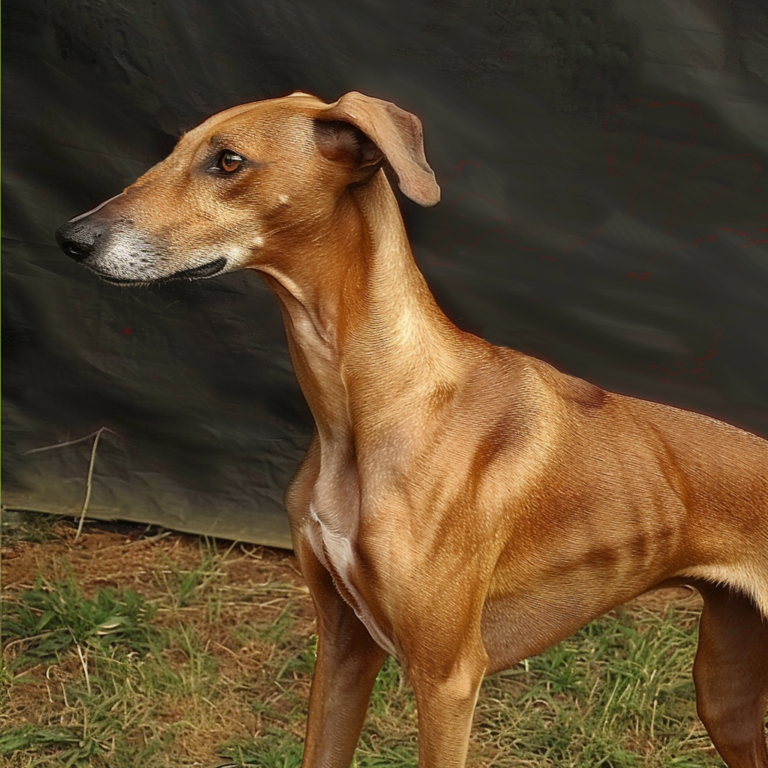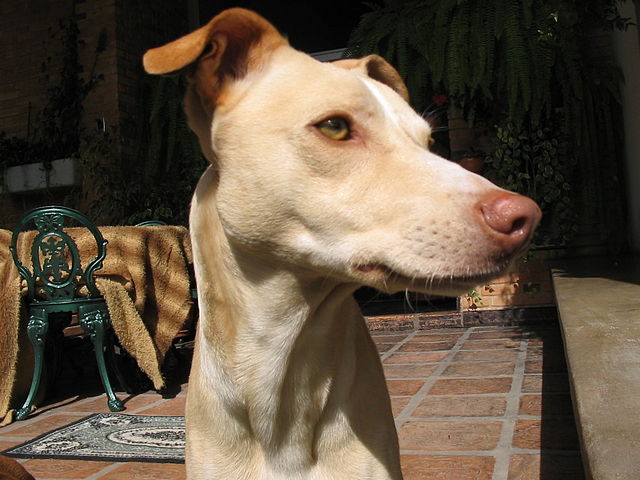Formerly known as the Longhaired Whippet, the Windsprite is not actually a variation of the Whippet but instead a breed established from it. Their history is a little controversial… back in the 70’s a man named Walter Wheeler Jr. claimed he had been breeding “rare” Whippets with a recessive longhaired gene. Later on with the help of genetic testing it was found that these were not purebred Whippets at all, but rather Whippets mixed with a herding breed. As Mr. Wheeler also kept Shetland Sheepdogs in his kennel it seemed all too clear what had happened! The breed name was eventually changed from Longhaired Whippet to Silken Windsprite to simply Windsprite. This breed is a forerunner to the Silken WindHOUND, which, although similar in appearance, is a different and separate breed.
The Windsprite is a low-key dog that can “bring it” when needed and turn off the energy when relaxing, making them suited to many different energy levels of households. Despite their elegant appearance, they are willing and able to engage in all manner of hiking, swimming, and even snow sports – provided, of course, that once home they are allowed to rest on a comfortable pillow or under a pile of blankets! They are low-maintenance dogs that can become wonderful family companions. One of the biggest “complaints” is that they are difficult to keep off the furniture – which is not too horrible a vice in the grand scheme of things! Windsprites are fairly quiet for the most part although they are not a completely silent breed. Most will announce strangers at the door and many can be vocal while playing, however overall they aren’t prone to senseless barking fits.
The Windsprite is intelligent and easy to train when sessions are short and non-repetitive. This is a versatile coated sighthound that can successfully compete in lure coursing, tracking, nosework, agility, obedience, freestyle, rally, conformation, flyball, herding, dock diving and straight racing. Many also enjoy learning tricks, especially ones that will snag extra attention or laughs! Probably because of the Sheltie in their lineage, they are less likely to dash after prey than other sighthounds although they still need to have a firm recall in place before being trusted off-leash, and some particularly high prey-drive dogs might still do better in the safety net of a fenced yard. Always assume that a squirrel is going to temporarily distract even the most recall-practiced of dogs! When it comes to training, this breed is very sensitive so if you’re having a bad day, you might want to skip training until you’re in a better mood. ![]()
Windsprites love being with their people – whether it be playing a game of fetch or hanging on the couch. This means that plenty of velcro’ing should be expected as they will shadow their owner from room to room! This is a social breed that enjoys meeting strangers and can even make a great therapy dog when well socialized. They have silly and clownish senses of humor and enjoy putting smiles on faces. This affectionate little sighthound also tends to get along well with other dogs, and enjoys engaging with those whom have similar playing styles. When raised with them, cats can become great friends as well, with the caveat that the cat be indoor-only so as to not set off their prey drive. A note about their velcro tendencies – surprisingly the breed isn’t super prone to separation anxiety although containment phobia may be an issue if they are put in a crate (whether or not the owner is in the room). A reliable crate is still essential for training however —explore the Petmate Vari Kennel loved by dog owners – https://amzn.to/3B3CUE6
Overall the Windsprite is a healthy breed usually living between 14-16 years of age. MDR1 drug sensitivity and COA (Collie Eye anomaly) are in the breed however with genetic tests available, responsible breeders are working to breed these diseases out. Allergies and IBD occasionally pop up as well so buyers should make sure to ask prospective breeders about their lines. It is impossible to avoid health issues in dogs completely (even mutts can have health-related problems), but responsible breeders make careful decisions and try to create as healthy of litters as they can.
Windsprites are able to handle an active outdoor lifestyle but also can be just as happy as couch potatoes. The Windsprite, despite being an able-bodied athlete, does not need a serious amount of exercise to be happy. Unlike some breeds that can become destructive and hard to live with without plenty of physical activity, this little sighthound isn’t prone to destruction or fits of frustration if a walk is skipped. Granted, it is a good idea to give him SOME exercise since he does enjoy being out and about with his owner – but he doesn’t require hours and hours a day. Sighthounds in general need to run, so even though the Windsprite can live happily in an apartment, he needs to be given daily access to a fenced yard for him to race around in.
Affiliate Disclaimer
As an Amazon Associate, I earn from qualifying purchases. This means that if you click on an affiliate link on this site and make a purchase, I may earn a small commission at no additional cost to you. Rest assured that I only link to products I have used, or use on a regular basis, and trust enough to recommend them to you!



